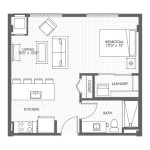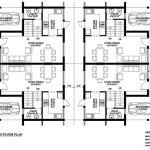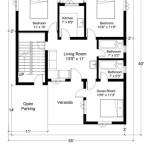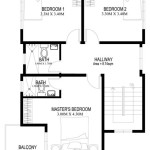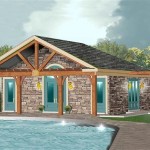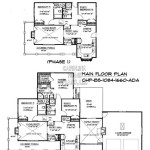House Plans with Basement Garages: Maximizing Space and Functionality
House plans that incorporate a basement garage represent a strategic approach to maximizing space utilization and addressing specific site requirements. These designs often appeal to homeowners with challenging terrain, limited lot sizes, or simply a desire for additional storage and functional space within their dwellings. The integration of a garage beneath the main living area presents a unique set of design considerations and advantages, ranging from cost-effectiveness to enhanced aesthetic possibilities.
The primary motivation for choosing a house plan with a basement garage generally stems from site-specific limitations. Steep slopes or uneven ground make traditional above-ground garages impractical or aesthetically unappealing. Building a garage into the basement allows for easier access to the house from the garage, especially during inclement weather. Moreover, a basement garage minimizes the visual impact of the garage structure, preserving the overall architectural integrity of the house.
This approach isn't without its challenges, necessitating careful planning and engineering. Adequate drainage and waterproofing are crucial to prevent water intrusion into the basement and potential damage to vehicles and stored items. Ventilation is another key factor, ensuring that exhaust fumes and other potentially harmful emissions are safely channeled away from the living areas above. The construction process itself can be more complex and potentially more expensive than building a detached or attached garage on a level lot.
Despite these challenges, the benefits of a house plan with a basement garage are significant. The creation of usable space, improved accessibility, and enhanced aesthetic appeal contribute to the overall value and functionality of the home. These plans also allow for greater flexibility in design, as the garage footprint is integrated into the foundation of the house, allowing more creative options for the above-ground living spaces.
Key Considerations for House Plans with Basement Garages
Several crucial aspects require careful consideration when selecting or designing a house plan with a basement garage. These considerations extend beyond the typical elements of house design and delve into the specific challenges posed by underground construction and the integration of a vehicle storage area with living spaces.
Site Analysis and Grading: The initial step involves a comprehensive site analysis to assess the topography, soil conditions, and drainage patterns. The slope of the land will dictate the depth of the excavation required and the structural requirements of the foundation walls. Soil testing is essential to determine the bearing capacity of the soil and to identify any potential issues, such as expansive clay or high water tables. Proper grading is crucial to ensure that water flows away from the foundation, preventing water from pooling around the garage entrance and potentially seeping into the basement. The driveway's slope from the street to the garage door must be analyzed and designed for safe ingress and egress, especially during winter conditions.
Structural Engineering and Foundation Design: The foundation walls of a basement garage must be designed to withstand significant lateral pressure from the surrounding soil. Reinforced concrete is the most common material used for these walls, and the thickness of the concrete and the amount of reinforcing steel required will depend on the height of the walls and the soil conditions. Proper drainage systems, including French drains and sump pumps, are vital to prevent water buildup behind the walls. The garage floor should also be designed to withstand the weight of vehicles and stored items and should be sloped slightly towards a drain to facilitate water runoff. The design must account for any potential seismic activity, incorporating seismic reinforcing as needed to ensure structural integrity during an earthquake.
Ventilation and Exhaust Systems: Adequate ventilation is paramount to prevent the buildup of carbon monoxide and other harmful exhaust fumes in the garage and to minimize the risk of these fumes entering the living areas above. A dedicated exhaust fan should be installed to remove fumes quickly and efficiently. Natural ventilation can also be incorporated by providing strategically placed vents in the garage walls. Building codes often specify minimum ventilation requirements for garages that are attached to or integrated with living spaces. Regular maintenance of the ventilation system is essential to ensure its proper functioning and to prevent the accumulation of dust and debris.
Advantages of Incorporating a Basement Garage
The integration of a basement garage offers several compelling advantages, particularly in situations where conventional garage designs are impractical or undesirable. These benefits encompass improved space utilization, enhanced accessibility, and greater design flexibility.
Space Optimization and Enhanced Property Value: By placing the garage beneath the main level of the house, valuable surface space is freed up for other purposes, such as landscaping, gardens, or outdoor living areas. This is particularly advantageous on smaller lots where maximizing available space is crucial. The added usable square footage in the form of the basement garage itself contributes to the overall property value, offering secure parking, storage, or even potential conversion into a workshop or recreational area. The impact on the street-facing facade can be minimized, thus maintaining or improving the aesthetic appeal of the property.
Improved Accessibility and Weather Protection: A basement garage provides direct access to the house from the garage without having to go outside, making it particularly convenient during inclement weather. This feature is especially beneficial for individuals with mobility limitations or for families with young children. Groceries and other items can be easily unloaded directly into the house, minimizing exposure to the elements. The secure access provided by an internal garage entrance enhances personal safety, especially when returning home late at night.
Design Flexibility and Architectural Integration: Incorporating a basement garage allows for greater flexibility in the design of the above-ground living spaces. The placement of the garage within the foundation allows for more creative floor plans and the potential for larger, more open living areas. The garage can be seamlessly integrated into the overall architectural design of the house, minimizing its visual impact and contributing to a cohesive aesthetic. The roof of the garage can be utilized as a deck or patio, further maximizing the use of available space.
Addressing Potential Challenges and Cost Considerations
While house plans with basement garages offer numerous advantages, it is essential to acknowledge and address the potential challenges and cost implications associated with their construction. These challenges relate primarily to water management, ventilation, and the complexities of underground construction.
Waterproofing and Moisture Control: Preventing water intrusion is paramount to ensure the longevity and usability of a basement garage. Proper waterproofing of the foundation walls is essential, utilizing high-quality waterproofing membranes and sealants. Effective drainage systems, including French drains and sump pumps, are crucial to channel water away from the foundation. Regular inspection and maintenance of the waterproofing and drainage systems are necessary to identify and address any potential problems before they escalate. Dehumidifiers can be used to control humidity levels within the garage, preventing mold growth and corrosion. Consideration should be given to grading the surrounding area to direct water away from the foundation.
Ventilation and Air Quality Management: Ensuring adequate ventilation is crucial to prevent the buildup of carbon monoxide and other harmful exhaust fumes. A properly sized and functioning exhaust fan is essential to remove fumes quickly and efficiently. Carbon monoxide detectors should be installed within the garage and in adjacent living areas to provide an early warning of dangerous levels of the gas. Regular maintenance of the ventilation system is necessary to ensure its proper functioning. The air quality within the garage should be monitored regularly to identify and address any potential issues, such as stale air or unusual odors.
Increased Construction Costs and Permitting Requirements: Building a house with a basement garage typically involves higher construction costs than building a house with a conventional above-ground garage. The excavation required for the basement, the reinforced foundation walls, and the waterproofing measures all contribute to the increased cost. Permitting requirements for basement garages can be more stringent than for above-ground garages, requiring detailed engineering plans and inspections to ensure compliance with building codes. It is prudent to obtain multiple bids from qualified contractors and to carefully review the plans and specifications to ensure that all necessary measures are included to address the specific challenges of basement garage construction. A longer construction timeline should be anticipated due to the complexity of the project.

Drive Under House Plans With Basement Garage The Designers

Hillside House Plans With Garages Underneath Houseplans Blog Com

Drive Under House Plans

4 Bedroom Contemporary Drive Under Style House Plan 4742

Simple House Floor Plans 3 Bedroom 1 Story With Basement Home Design 1661 Sf Ranch

Drive Under House Plans With Basement Garage The Designers

Plans Of A 1964 House In Mierendonk The Underground Garage Is Scientific Diagram

Plan 8131lb For The Front Sloping Lot Craftsman House Plans Basement

Hillside House Plans With Garages Underneath Houseplans Blog Com

Modern Five Bedroom House Plan 1974
Related Posts

